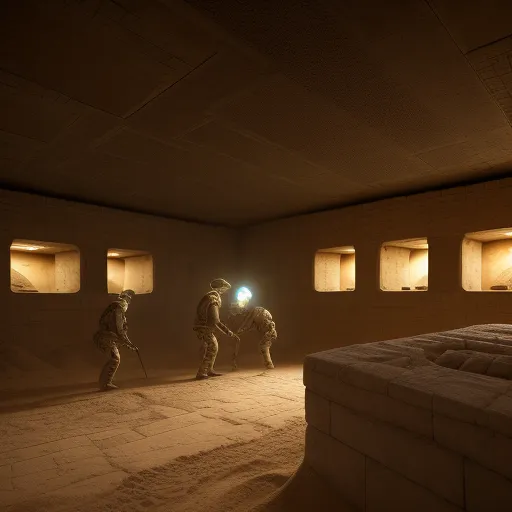The Dark Ones, the Galacticide, and the Secrets of Prral
- Bert-Oliver Boehmer
- Feb 8
- 4 min read
Updated: Feb 10
Some discoveries change everything. Not just for the characters who make them, but for the entire course of a story. The scene on Prral, where Kel Chaada finds himself among scientists and archaeologists rather than soldiers and warlords, is one such moment. It marks a fundamental shift in how both Kel and the reader engage with the past.
Until now, the Galacticide—the single most pivotal catastrophe in known history—has existed in the background, referenced in hushed tones, an event whose consequences shaped everything that came after. But never before has its cause been named. Never before has there been an answer to why it happened.
That changes here.
For the first time, the Dark Ones and the Galacticide are spoken of together. It comes as a chilling truth: the Galacticide wasn’t just a cosmic accident. It was something orchestrated. Caused.
This revelation doesn’t just reframe history—it redefines it. And for Kel, already standing on uncertain ground, it is another piece of the past he can no longer ignore.
Daaw Krrua: The Scholar with His Own Agenda
Daaw Krrua presents himself as a man of knowledge, someone who values history over politics, truth over convenience. To Kel, who has spent his life navigating war and survival, Daaw’s approach is unfamiliar—borderline unsettling. He commands respect, not through power or rank, but through his understanding of the past.
Yet there is something about Daaw that remains elusive. His insights are sharp, his knowledge vast, but his motivations? Less clear. Kel, for all his tactical brilliance, is still learning to read the kind of battlefield Daaw operates on. And for now, that battlefield is history itself.
Ahma Zhanyza: The Scientist Who Sees the Unseen
If Daaw Krrua represents wisdom, Ahma Zhanyza represents curiosity. She doesn’t just study history—she questions it, refusing to accept convenient narratives. It is through her relentless pursuit of truth that Kel Chaada is forced to confront something he has never truly considered: What if the past was erased on purpose?

What if the Galacticide was not just a tragic event, but the result of something far more deliberate?
It is Ahma Zhanyza’s work that makes Kel—and the reader—realize that the destruction of civilizations might not have been the end goal, but a consequence of something much larger. Her quiet conviction, her certainty that something important has been hidden, begins to shift Kel’s perception of the world.
And that shift will have consequences.
The War for Prral: A Battle Over More Than Territory
As Kel Chaada listens, piecing together the implications of what he’s learning, something else begins to take shape—an idea that lingers at the edge of his understanding.
The war for Prral may not have been fought just for its strategic location.
The reader has already seen an earlier moment in the novel—an exchange between Empress Sya Omga and her chief scholar—where they discussed wrestling old secrets away from a place they cryptically called the meeting place of the three. At the time, it seemed like another layer of the Empress’s thirst for power, her desire to control knowledge.
But now, here on Prral, at this very site, Kel Chaada stands where that scholar once stood—before he died in the crossfire of war. The coincidence is too great to ignore.
Was the war for Prral really about military positioning? Or was it about something buried here? Something that certain factions would kill to claim—or to keep hidden?
And if the Galacticide was the result of a war with the Dark Ones… then what exactly was the Empress looking for?
The First Acknowledgment of the Dark Ones and the Galacticide
This scene is not just a historical revelation. It is a moment where the story itself changes.
Before now, the Dark Ones did not exist in the novel’s dialogue, in the minds of its characters. Not because they were unknown, but because they were unspoken. Their absence has been its own kind of presence—a silent void, noticeable only in retrospect.
But here, for the first time, they are named. And with that name comes the knowledge that they are not just an old enemy, not just another forgotten faction in the galaxy’s bloody history.
They are the architects of the Galacticide.
This realization reframes everything the reader thought they understood about the past. It forces the question: Who knew? If the Dark Ones were responsible, why is there not more research to discover details?
And, perhaps most troubling of all: Could they return?
Conclusion: A History That Refuses to Stay Buried
This scene is more than an archaeological dig. It is the moment when the past begins clawing its way into the present.
It introduces two figures—Daaw Krrua and Ahma Zhanyza—who will shape Kel Chaada’s journey not through battle, but through knowledge.
It suggests that the war for Prral was not just a military conflict, but part of a deeper struggle over truth.
And most importantly, it takes the Galacticide—a tragedy that has loomed over the story—and gives it a cause. A name. A force responsible.
For Kel Chaada, this is a turning point. He came to Prral to investigate ruins.
Instead, he has uncovered a war that never really ended.







Comments